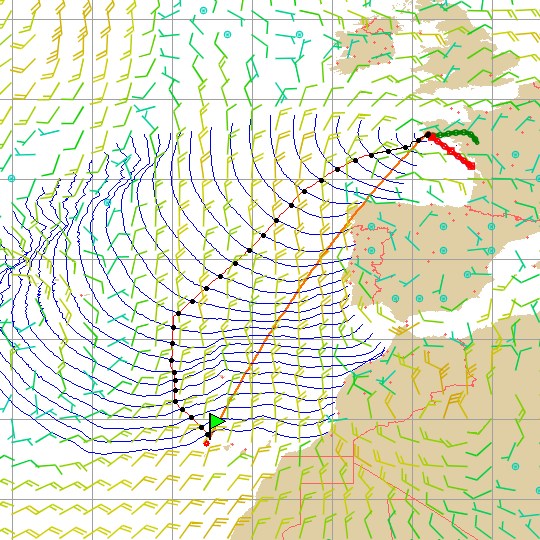
Post by
zezo | 2020-04-18 | 21:43:36
1) Don't use an interval that does not allow you to reach your destination, if at all possible. It does not make sense 90% of the time.
It's bad idea to follow every whim of the router so if there are two about equal but distinct routes you better commit to one of them and stick with it.
The way to persuade the router is to move the destination point around a bit.
The most important tool is not the track. It's the isochones. You learn to read them much like the elevation lines on a topo map. There are ridges and valleys and you don't want to get in the valleys.
In the screenshot above there are three distinct propagation fronts. The one with the track meets another one one degree East. There is third 4 degrees further East, but I would not count on that one.
I've been following the forecast for few days, and the far West route comes up about half of the time, the other option is the straight line.
Common sailing wisdom says you should stick close to the straight line if there is a choice and everything else is the same.
But then sometimes a far-off route wins, like the visit to Newfoundland in the recent Great Escape races. It was not exactly impossible, but relatively few players committed to it and in the end some players got Top 100 ranking without full options.
2) It's the evolution of the forecast. The trade winds move E-W depending on passing systems.
I may have some more comments, but It's Easter around here, I've been baking the panettone today and it's getting late, so let's see what tomorrow brings.





 Post by LinusVanpelt | 2020-04-16 | 15:38:36
Post by LinusVanpelt | 2020-04-16 | 15:38:36

 User Login
User Login
